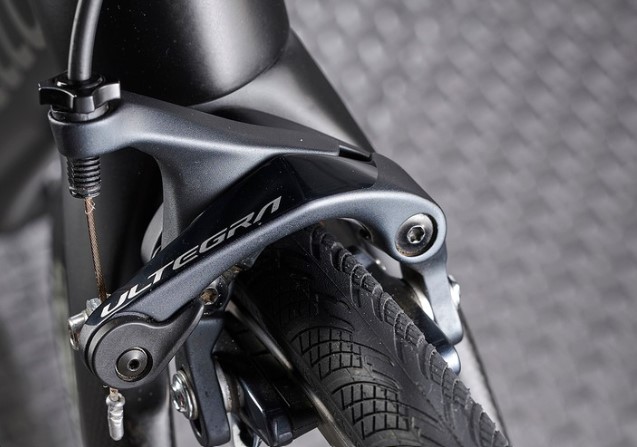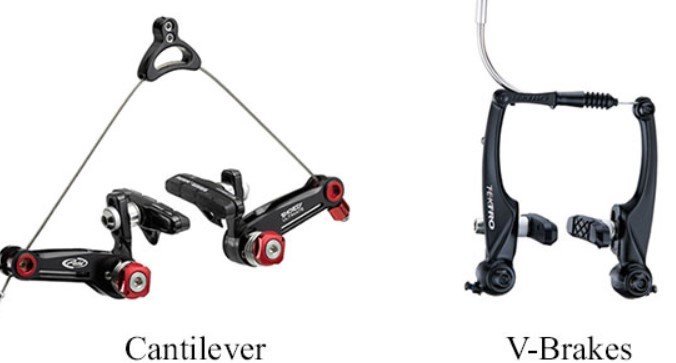The thrill of cycling is unmatched, blending exercise, exploration, and eco-friendly transportation. Yet, the essence of a safe and enjoyable ride lies in a reliable braking system. In this comprehensive guide, we’ll delve into the world of bike brakes, exploring the various types and their unique features. From the traditional rim brakes to the advanced disc brakes, this post will provide you with all the necessary information to make an informed decision for your cycling needs.
Unveiling the Bike Brake Landscape
Bike brakes, the critical components making sure your safety on the road, are primarily categorized into two types: rim brakes and disc brakes. Each type, with its distinct mechanism, offers unique advantages and considerations vital for your cycling experience.
Rim Brakes: A Traditional Approach

Rim brakes, the more traditional type of bike brake, have been a staple in cycling for decades. Operating by applying pressure to the outer rim of the wheel, they create friction that slows or stops the bike. These brakes are known for being lightweight and affordable, making them an excellent choice for entry-level and hybrid bikes.
Advantages of Rim Brakes:
- Lightweight and affordable, ideal for casual riders and budget-conscious cyclists.
- Easy to maintain and adjust, perfect for those new to bike maintenance.
- Effective in dry conditions, offering reliable performance in most urban settings.
Disadvantages of Rim Brakes:
- Reduced performance in wet or muddy conditions, potentially compromising safety.
- Can wear down rims over time, leading to additional maintenance costs.
- Less powerful than disc brakes, making them less suitable for high-speed or rough terrains.
Disc Brakes: A Modern Advancement

Disc brakes represent the modern evolution of bike braking systems. Gaining popularity for their superior stopping power and modulation, they work by applying pressure to a disc mounted at the hub of the wheel. This design makes them ideal for mountain bikes and high-performance road bikes.
Advantages of Disc Brakes:
- Exceptional stopping power in all conditions, making sure safety in diverse environments.
- Consistent performance regardless of weather, providing peace of mind during rides.
- More durable and less prone to wear, offering a long-term braking solution.
Disadvantages of Disc Brakes:
- Generally heavier and more expensive than rim brakes, potentially affecting bike handling and budget.
- Require more specialized maintenance, which might be challenging for novice cyclists.
Diving into Subcategories
Beneath the primary categories of rim and disc brakes lie various subcategories, each with distinct characteristics.
Rim Brake Subtypes:

- Caliper Brakes: Widely used, these feature two brake pads clamping onto the rim, suitable for most road bikes.
- V-Brakes: Offer enhanced power with long arms, ideal for hybrid and some mountain bikes.
- Cantilever Brakes: With shorter arms than V-brakes, these are often found on touring and cyclocross bikes.
Disc Brake Subtypes:
- Mechanical Disc Brakes: Operate via cables and are more budget-friendly, suitable for entry-level mountain and hybrid bikes.
- Hydraulic Disc Brakes: Use fluid lines for actuation, providing unmatched responsiveness and modulation, favored in high-end mountain and road bikes.
Selecting the Right Bike Brakes for Your Needs
Choosing between rim and disc brakes hinges on various factors, including your cycling style, the terrain you frequent, and your budget.
Consider the Following Factors:
- Cycling Style: Rim brakes might suffice for casual road biking in dry conditions. However, for off-road, mountain biking, or wet weather cycling, disc brakes are superior.
- Terrain: For challenging terrains or steep descents, the consistent and controllable braking of disc brakes is invaluable.
- Budget: Rim brakes are more affordable, but disc brakes, despite being a significant investment, offer enhanced performance and durability.
Seek Expert Advice:
Consulting with an experienced bike mechanic or seasoned cyclist can offer insights tailored to your specific needs and preferences, aiding in your decision-making process.
Conclusion
Understanding the intricacies of bike brakes – rim and disc – is super important in the cycling world. This knowledge not only enhances your safety but also enriches your riding experience. Whether you are an experienced cyclist or a beginner, choosing the right type of brake is super important for a safe and enjoyable journey. Remember, your brakes are as important as the bike itself, acting as your reliable partner in every ride.
For more information on cycling tips, bike maintenance, and the latest in bike technology, don’t forget to visit our homepage at Best Bike Parks. Our platform is all about providing you with the best resources to make your cycling experience unforgettable.







